By Accident or Design
| June 6, 2023Some people decided that summer doesn’t have to be plagued with tragic statistics
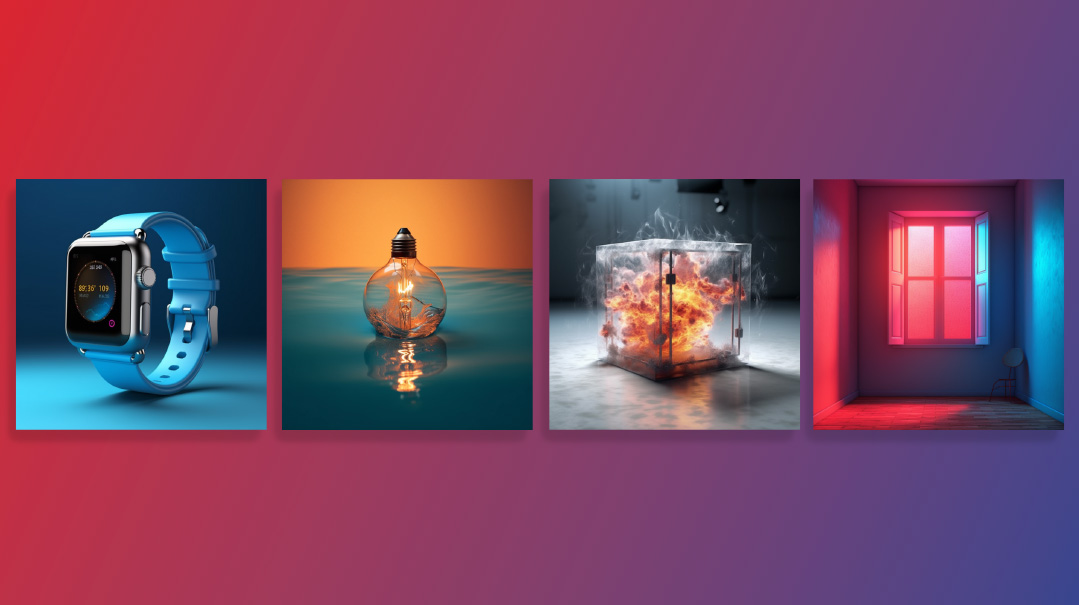
Out of the Water
Product: SightBit drowning prevention system
Inventor: Adam Bismuth
Adam Bismuth, a young entrepreneur and inventor from Tel Aviv, was once at the Dead Sea when he heard the hysterical shrieks from the shore: Someone was drowning (although people falsely assume that it’s impossible to drown in the Dead Sea), and the lifeguard was too far away to rescue the victim in time. The image haunted Bismuth for months.
“It was a very long strip of beach and there was really nothing the lifeguard could do,” Bismuth says. “But I just couldn’t run away from the images of the tragedy, from the helplessness of it all. Yet I also realized that it’s often unrealistic to expect the rescue services to arrive in time, when literally every second counts, when the window of opportunity from the moment someone starts to drown is very short, and time is generally not in their favor.”
Bismuth, who has been a developer and innovator for over a decade, knew what he had to do: He would design an early-warning system able not only to detect a drowning person in real time, but also to predict a tragedy in the making based on weather and water conditions, crowd size, and other factors that will generally precede a drowning.
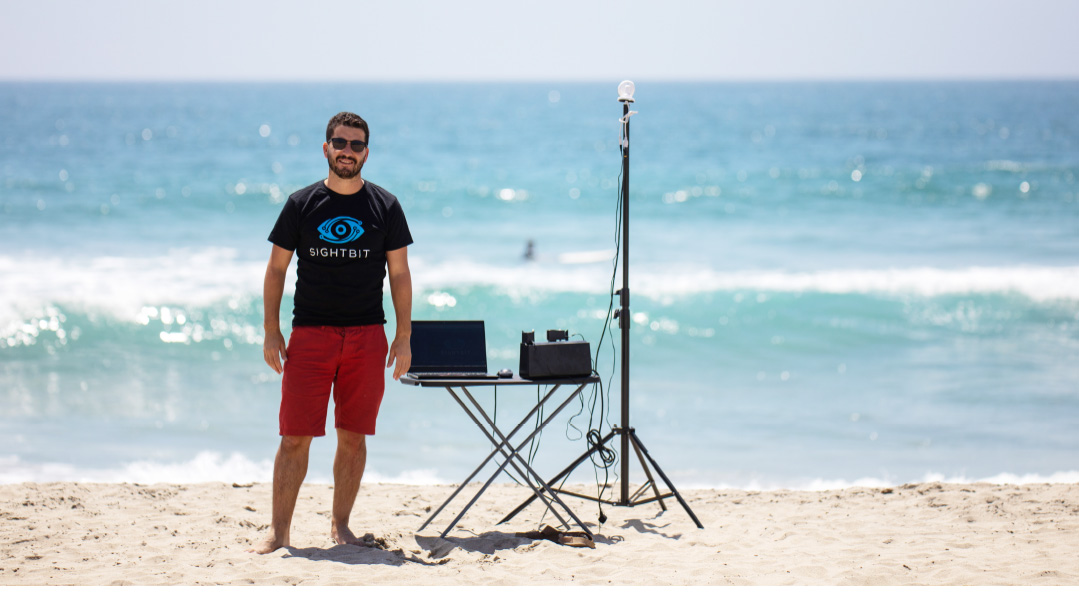
How does it work?
“After lots of beach and shore research, my team and I realized that detecting a person while he is drowning is already too late,” he explains, describing the third leading cause of accidental death worldwide. “Drowning is a rapid event, inflicting life-long brain damage after 20 seconds and death after about 30 seconds. So we decided to shift our direction and instead looked into all the factors that create an environment for drownings to happen. We concluded that about 70 percent of drownings occur because of the conditions of the sea and that we needed to develop an algorithm that would identify dangers in the sea conditions and then ‘predict’ the specific people in the area most susceptible to drowning.”
Bismuth and his team harnessed artificial intelligence and image processing technologies to analyze real time data about swimmers and changes in the conditions of the sea, such as waves and unexpected currents. The system, which Bismuth says is “the world’s best lifeguard,” is called SightBit, an additional set of eyes that never lose sight of what’s happening in the water and on the beach. The system constantly “reads” the water in order to detect any sign of danger and provide warnings in advance, interfacing with the existing infrastructure of video cameras installed on the beach. It analyzes their video feeds to provide reliable insights in real-time and predictions based on aggregated data.
SightBit — which Bismuth notes is not out to replace lifeguards, just to make their jobs more efficient by giving better distance and warning — provides beach attendance breakdowns and predictions, alerts to dangers in the water such as rip-currents, inshore holes, vortexes, and wave height, alerts to children unattended on the beach or in close proximity to the water, and can automatically activate speakers to alert bathers they’re at risk, and even a drone to drop life-preservers and reach people in distress.
Bismuth is thrilled that the system is up and running in many sites around Israel, and not only at the beaches. Today this smart surveillance system is used by companies for security purposes, and was even used recently to find the victim of a crane accident who’d been missing for several weeks.
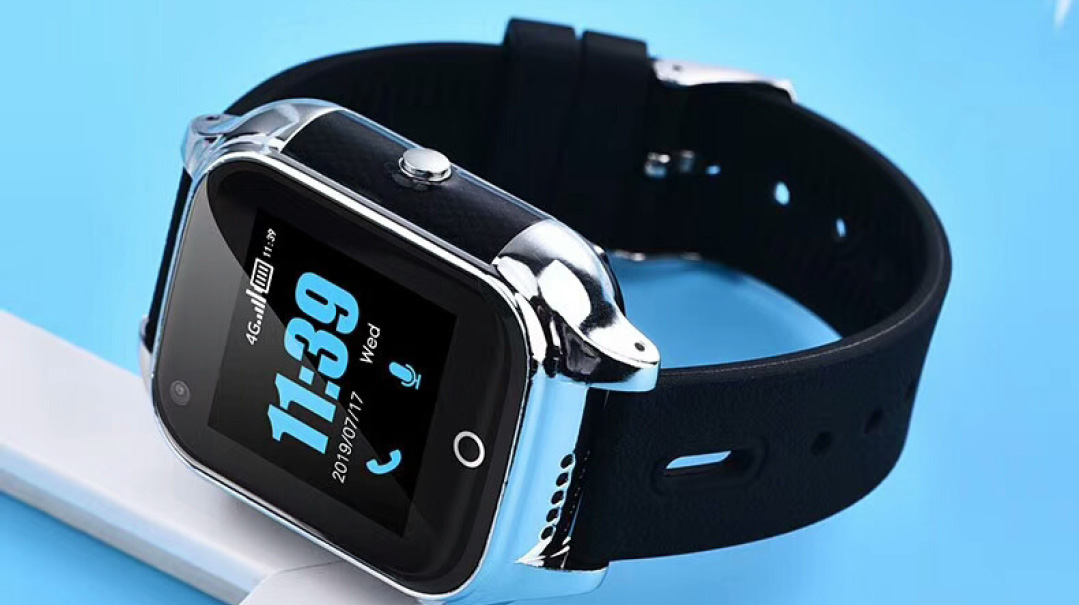
Lost and Found
Product: Foxi-Finder locator
Inventor: Elisha Korel
Elisha Korel is a young entrepreneur who stands behind the development of a potentially life-saving product. “You know how you go out with children to a very busy place and then spend the whole time just counting the children and keeping track of them so that they don’t disappear? People have developed their own methods of tracking their kids, from writing a phone number on the back of the child’s hands to begging rescue personnel to make an announcement over the loudspeaker,” says Korel.
“But we also realize that it’s not enough, and no one wants to get to a situation where a young child is walking around and crying as he searches for his parents among hundreds of people in a crowd, where an elderly Alzheimer’s patient is wandering around looking for a familiar landmark, where a special-needs child who wants to be independent can’t find his way back home.
“On a personal level, I decided that I would try to offer a solution for all these circumstances, and for the last ten years, I have dedicated my life to this invention.”
Korel was driven by a personal incident. “I was a young teen when I took my five-year-old sister to a crowded event, and at one point, I realized she’d disappeared. It was very tense, and it took a while until she was found safely. Today, she’s already 18, and I’m sure she’s totally forgotten about what happened, but I didn’t forget, and that’s how Foxi-Finder came into being.”
How does it work?
Foxi-Finder is a smart watch with a built-in telephone, GPS sensor, and other features (for those who don’t want to wear a watch, the sensor can be worn like a necklace, or can even been attached to the inside of a garment). The small button, Korel explains, is first and foremost a panic button. The minute the child or adult presses it, it dials the family or the medical center, or whatever it has been programmed to dial. The system also comes with GPS locator sensors, so that anyone who presses the button will be tracked and located.
Korel notes that over the years, he’s been asked to update the product, and he’s always happy to add new features based on requests. “For example,” he says, “we understood from people that when a child disappears, the most important thing for them is a soothing voice to guide them. So we added a button that enables the device to receive a phone call without it being pressed. The call simply interjects, and this way the child can hear the voice of his parent guiding him: ‘Stop and wait for us, we’ll be there very soon.’ Likewise, the product can also measure vital signs, such as pulse and saturation levels, which lets us know if it’s necessary to summon emergency services.”
Taking into account the complex security situation in Israel, the device is also used for security purposes.
“In addition to the family version of the Foxi-Finder, there is also a version for security forces, intended primarily for people in the defense establishment,” says Korel, noting that many public figures, including the mayor of Jerusalem, wear them to enhance their personal security.
Korel is especially gratified when he knows he’s helped someone who might otherwise be a danger to himself. He recently got a call from a woman whose husband had been diagnosed with Alzheimer’s, and because she could merely turn her back and he would disappear on her, she attached the sensor to him. There is a bus stop right in front of their building, and he once managed to board a bus before she even realized what had happened. She called us in a panic, and we guided her how to connect to the computer, and through her husband’s sensor, she could see exactly where he got off. She saw him traveling to another city, where he sat on a bench at the bus stop and then toppled backward. She summoned emergency services to the exact location and guided them how to find him in the bushes behind the bus stop. They located him, unconscious, but because of the rapid response, he was saved. I have no doubt that without the senor, this person would not be with us today.”

Recharged Protection
Product: AlgoShield battery hazard detector
Inventor: Dr. Niles Fleischer
Electric scooters and bicycles provide hours of enjoyment during the summer, but in addition to the dangers involved in riding them, it turns out that they also pose a safety danger because of their rechargeable lithium batteries. These batteries can explode, inflicting serious damage.
The explosion, called thermal runaway, can start from minor defects that are hard to detect, going unnoticed for weeks. But once they reach a critical level, they suddenly erupt, releasing dangerous gases and a tremendous amount of heat, with temperatures jumping to over 800 degrees Celsius in a matter of seconds. And it’s not only bike and scooter batteries; car battery chargers, laptop computers, cell phones, and even electric cars have been involved in such explosions.
Today, though, you no longer have to be at the mercy of a potential explosion that can catch you off guard at any time of day or night. That’s because the Rechovot-based company ALGOLiON has developed its flagship product AlgoShield, an early-warning smart diagnostic software that both extends the life of lithium-ion batteries and prevents safety hazards.
“Lithium batteries, used everywhere from cellphones to electric vehicles, have the highest energy density of any rechargeable system, but that means they’re also a cause of safety hazards. Our company has developed a program that can detect breakdowns in lithium-based batteries,” says Dr. Niles Fleischer, who, with his partner, Dr. Alex Nimberger, heads the startup that’s already put several exclusive products on the market. “It’s literally a matter of saving lives, because our program reports a battery’s problematic status already a week before a devastating explosion that causes fires, financial loss, and also loss of life.”
Existing methods, he says, are too little, too late to keep users safe. The damages from fires in electric vehicles is in the billions of dollars, and that’s only property damage.
“My partner and I thought of a different way,” he explains. “We served together in the Power Sources division of the IDF and worked on similar problems, and we’ve been working on AlgoShield for six years, developing a product which we believe finally achieves our vision of protecting people and property.”
How does it work?
“It’s really quite simple,” Dr. Fleischer says. “Our system is based on a program that connects to the microprocessor found in these batteries. The program measures and monitors the pressure and the current in the battery, and because the program is smart and very sensitive, it’s able to detect minor changes in the current and voltage, and then issues a warning alert if the battery is emptying.
“Without this program,” he continues, “there is no chance of detecting a fault, because even as the battery is emptying, nothing changes in its outward appearance, and there’s no reason to suspect that it’s emptying out, because even in this state, the battery is still okay.”
Dr. Fleischer hopes that AlgoShield will soon be a standard feature integrated into every device that uses a lithium battery. “We’re at the forefront of battery safety and have unique facilities for testing cells under extreme abuse conditions,” he says.
Dr. Fleischer and his company are now working with large vehicle-manufacturing companies around the world, who want to install the technology in their cars. They are also in discussions with the Boeing aircraft-building company, where massive batteries are used.
“There have been some frightening stories regarding batteries that have exploded in planes,” he notes. “So far, those explosions have happened on the ground, and I don’t even want to think of the horror of an explosion in the air.”
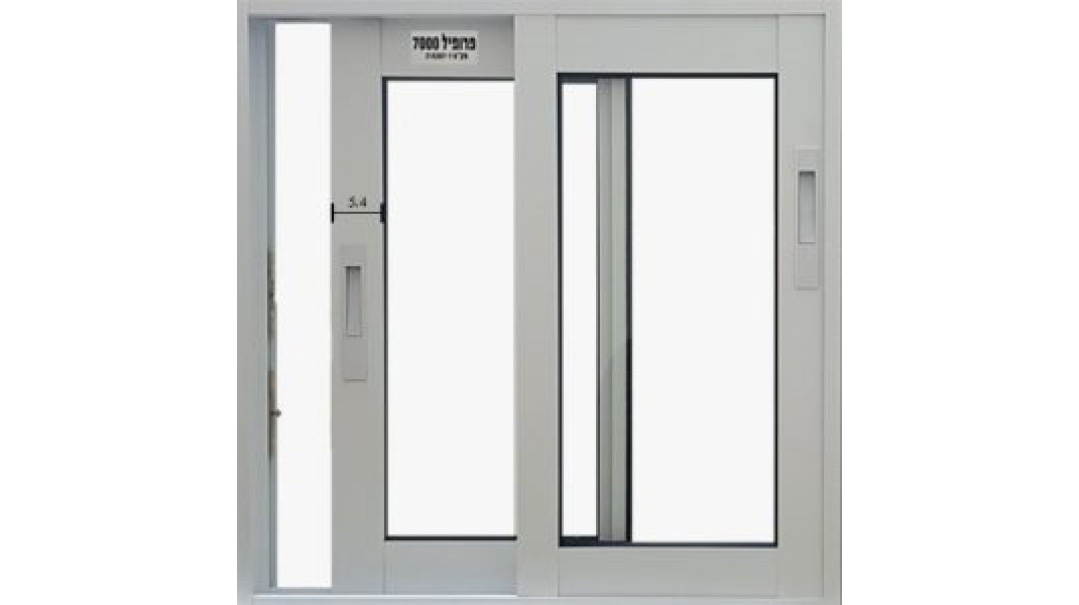
Window of Opportunity
Product: ILock smart window locks
Inventor: Itzik Moyal
A little over 20 years ago, Itzik Moyal, a metalworker from Kfar Saba, experienced every parent’s nightmare when he looked for his young daughter in all the rooms of the house but couldn’t find her. “When you know your child is at home, you live on the fourth floor, and you don’t find them in any of the rooms, you immediately think of the worst-case scenario,” he says. “I work with window grates and aluminum frames, so I didn’t think twice before grabbing my toolbox and running from one window to the next looking for the child. Because I didn’t find her anywhere, I ran outside, in sheer terror, to see what was happening downstairs. And then I saw her: My daughter had climbed out the window and her small body had partially fallen through the window bars. She was literally dangling in the air. I knew that in a matter of seconds a tragedy would unfold, chalilah.”
Moyal says that in those seconds, he knew the only way to save his child was by working quickly and calmly. “I called to her: ‘Sweetie, Abba’s coming to get you, hold on tight.’ Meanwhile, I ran back into the house, climbed out the window, and with a quick yank, I was able to pull her back into the room.
The child’s life was saved, but Moyal’s was never the same. “That very day, I promised my daughter that I would give her a present: a special invention in her honor. I don’t know if she understood what I was talking about, but that’s how the idea of ILock was born.”
ILock is really a simple idea, a way to lock a window so that children can’t open it from the inside and burglars can’t open it from the outside.”
How does it work?
“It’s a patented locking mechanism that’s based on three locking points for each of the movable window panes. The mechanism is installed in a hidden spot in the aluminum profile of the window, and the parts that hold the lock in place are affixed to the frames of each glass panel. When I designed the product, I had in mind that it should be able to work for both old and new windows so everyone can install it. I also designed it so that it wouldn’t be visible to the eye — it’s nestled in the profile of the window, giving parents peace of mind knowing their children won’t be able to climb outside.”
Most people, in Israel at least, generally feel safe relying on their soragim [window bars] to prevent falls and stop break-ins. But, says Moyal, they’re not always the best option.
“Window bars are meant to prevent tragedies, but they can actually be dangerous if they’re not installed properly. Also, in case of fire, they can become a death trap if there’s no other exit. With ILock, the window can be opened by the parent in a second, although a small child can’t do it alone, which makes for maximum safety all around.
It took Moyal seven years of tinkering to develop the system, which has been on the market for the last decade. “We’ve reached thousands of homes,” he says, “and every time people tell me about thefts or other disasters that were prevented because of it, I remember that scene of my daughter on the window, and I realize what a great zechut it is to save lives, plain and simple.”
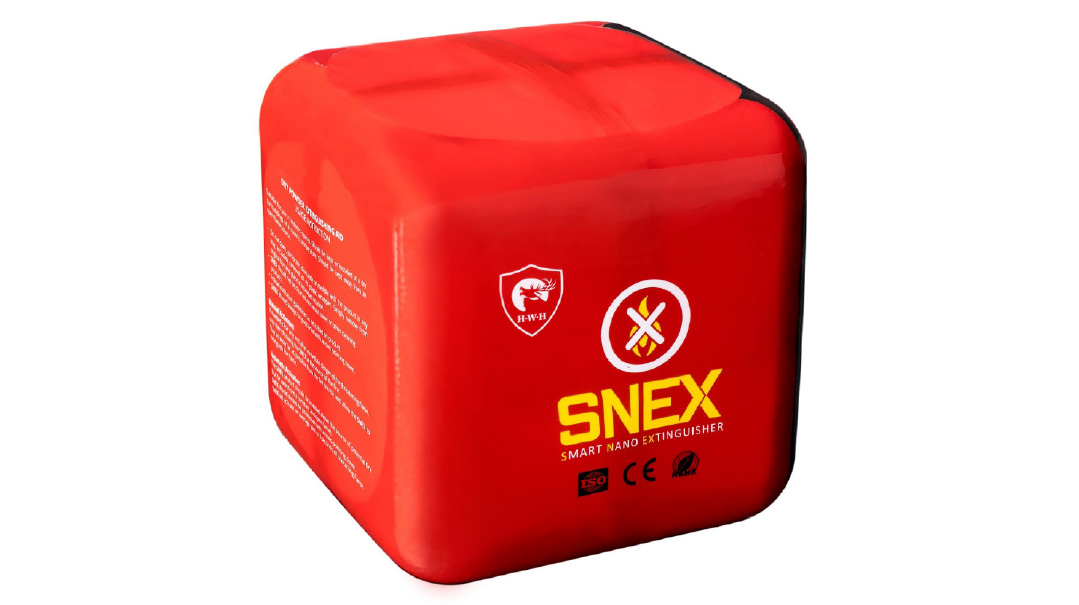
Cease Fire
Product: SNEX, a fire-extinguishing cube
Inventor: Assaf Wolfson
IT could happen in a second of inattention: A child takes out matches and tries to be the “Shabbos mommy”; there is a short in the electric box; the lint in the dryer ignites. And before anyone can figure out what’s happening, flames erupt and the house becomes a fire trap.
“Usually, when a fire breaks out at home, it spreads rapidly, and if you can’t bring it under control right at the beginning, it’s very hard to stop it from consuming everything,” says Assaf Wolfson, one of the owners of SNEX, a new fire-extinguishing technology in the form of a portable cube. (He named it “SNEX” for the Burning Bush, the biblical sneh.)
How does it work?
“It’s a cube that contains dry fire-extinguishing powder, and when the cube touches the flame, it goes into action within five to seven seconds. You hear a small explosion and the powder scatters and puts out the fire,” Wolfson explains. “The success rate is nearly a hundred percent, and the innovative idea here is that there’s no need for any advance knowledge or skills, and anyone can activate the cube the moment there’s a fire by simply placing it on the flames.”
He recommends keeping the cube in or near the electric box, because more than 60 percent of fires start in electric boxes, although by law, residential electric boxes are not obligated to have fire-extinguishing systems despite the statistics.
Before marketing the product, Wolfson and his team experimented with different methods to see how effectively the cube works in various circumstances. “We even put the cube in an aron kodesh to make sure that if a fire breaks out, the sifrei Torah won’t go up in flames. We actually scattered the powder on the parchment and saw that it doesn’t cause damage, so we know that it can be totally protective.”
At a particular bank’s request, they also installed the cube in the bank’s cash machines, because a break-in to the machine often causes a fire.
“Likewise, we’ve installed the cube in hothouses in remote agricultural areas,” Wolfson says. “If a fire breaks out, it could destroy huge swathes of land by the time fire rescue services arrive.”
And if the cube — about the size of a melon — seems too messy, spraying its powder over the fire, Wolfson has another product called AMFE, the smallest fire extinguisher in the world, which is activated by temperature, automatically detects fire, then self-activates.
“It’s a small product with a smart mechanism that detects the moment the temperature rises, and then it issues an order to its electric board and releases the plug.”
Wolfson doesn’t have exact figures on how many fires his products have prevented or stopped in their tracks, but he says that just last week, the SNEX cube was used to put out a fast-moving fire in a Tel Aviv parking lot.
“Pressure hoses and fire hydrants have their place,” he says, “but it’s time for some innovation in the field, and we’re happy we can be part of it.”
(Originally featured in Mishpacha, Issue 964)
Oops! We could not locate your form.







